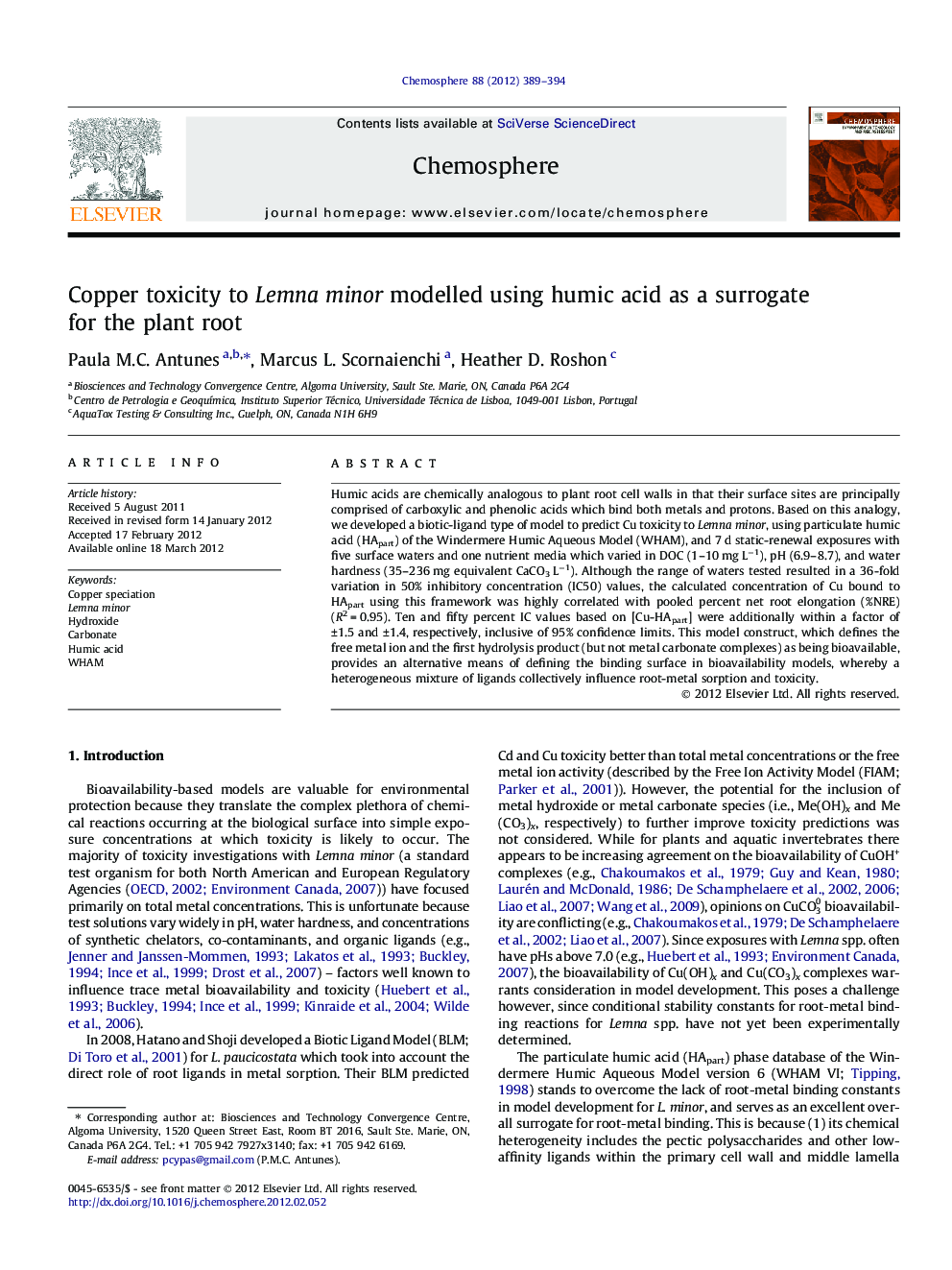| کد مقاله | کد نشریه | سال انتشار | مقاله انگلیسی | نسخه تمام متن |
|---|---|---|---|---|
| 4410045 | 1307524 | 2012 | 6 صفحه PDF | دانلود رایگان |

Humic acids are chemically analogous to plant root cell walls in that their surface sites are principally comprised of carboxylic and phenolic acids which bind both metals and protons. Based on this analogy, we developed a biotic-ligand type of model to predict Cu toxicity to Lemna minor, using particulate humic acid (HApart) of the Windermere Humic Aqueous Model (WHAM), and 7 d static-renewal exposures with five surface waters and one nutrient media which varied in DOC (1–10 mg L−1), pH (6.9–8.7), and water hardness (35–236 mg equivalent CaCO3 L−1). Although the range of waters tested resulted in a 36-fold variation in 50% inhibitory concentration (IC50) values, the calculated concentration of Cu bound to HApart using this framework was highly correlated with pooled percent net root elongation (%NRE) (R2 = 0.95). Ten and fifty percent IC values based on [Cu-HApart] were additionally within a factor of ±1.5 and ±1.4, respectively, inclusive of 95% confidence limits. This model construct, which defines the free metal ion and the first hydrolysis product (but not metal carbonate complexes) as being bioavailable, provides an alternative means of defining the binding surface in bioavailability models, whereby a heterogeneous mixture of ligands collectively influence root-metal sorption and toxicity.
► Cu toxicity to Lemna minor assessed for five natural waters and one nutrient medium.
► Highly varied test water chemistries prompted a range in plant response to Cu.
► Bioavailability model developed using humic acid as a surrogate for L. minor roots.
► Fifty percent effect concentrations were predicted within a factor of ±1.3.
Journal: Chemosphere - Volume 88, Issue 4, July 2012, Pages 389–394